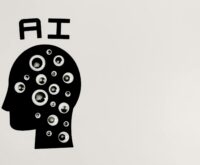AI-Powered Marketing: It’s Not the Future Anymore, It’s Your Competition’s Secret Weapon
Let’s cut to the chase. You’ve heard the buzzwords: AI, machine learning, neural networks. It all sounds a bit like a sci-fi movie, doesn’t it? But here’s the reality check: AI-powered marketing isn’t some far-off concept for giant corporations with bottomless budgets. It’s here, it’s accessible, and it’s fundamentally changing the game for businesses of all sizes. If you’re still relying solely on gut feelings and last quarter’s spreadsheets, you’re not just falling behind; you’re bringing a butter knife to a laser fight. This isn’t about replacing marketers with robots. It’s about giving them superpowers. It’s about moving from shouting your message at a crowd to having a meaningful, one-on-one conversation with every single customer, simultaneously. Ready to see how?
Key Takeaways
- Personalization is King: AI allows for hyper-personalization at a scale previously unimaginable, boosting engagement and conversions.
- Data Becomes Insight: AI transforms massive datasets into predictive insights, helping you forecast trends, identify at-risk customers, and optimize spending.
- Efficiency is the New Currency: Automating repetitive tasks—from content ideation to ad bidding—frees up your team to focus on high-level strategy and creativity.
- It’s Accessible: You don’t need a team of data scientists to start. Many existing marketing platforms have powerful AI features built right in.
The “Why” Behind the AI Hype: What’s Really Changing?
For decades, marketing was a game of educated guesses. We created customer personas, segmented our email lists based on a few broad criteria, and hoped for the best. We’d A/B test a headline and celebrate a 5% lift in click-through rates. It worked, sort of. But it was inefficient and impersonal. The customer experience was often fragmented and generic. Think about it. You’d buy a product online, only to be bombarded with ads for that exact same product for the next two weeks. It felt clumsy because it was.
AI changes the entire paradigm. It’s not just about doing the old things faster; it’s about doing entirely new things. We’re flooded with data—every click, every scroll, every purchase, every support ticket is a signal. Humans simply can’t process this deluge of information. AI can. It sifts through the noise, finds the patterns, and tells you not just what your customers did yesterday, but what they’re likely to do next week. This shift from reactive to predictive is the core of the revolution. It allows you to anticipate customer needs, solve problems before they arise, and deliver the perfect message on the perfect channel at the perfect moment. That’s not just better marketing; it’s a fundamentally better customer experience.
Core AI-Powered Marketing Strategies You Can Implement Today
Okay, enough with the high-level theory. Let’s get into the nitty-gritty. How can you actually use this technology to move the needle for your business? Here are some of the most impactful AI marketing strategies that are delivering real results right now.

Hyper-Personalization at Scale: The End of One-Size-Fits-All
This is arguably the most significant impact of AI in marketing. True personalization goes way beyond sticking a `[FIRST_NAME]` tag in your email greeting. AI algorithms analyze a user’s browsing history, past purchases, on-site behavior, and demographic data to build a dynamic, evolving profile of their individual preferences. You’ve seen this in action every time Netflix suggests a show you actually want to watch or Amazon recommends a product you didn’t even know you needed. They’re not guessing. They’re using machine learning to connect dots you didn’t know existed.
How can you apply this?
- Dynamic Website Content: Imagine a visitor comes to your e-commerce site. Instead of seeing a generic homepage, they see products and offers tailored to their previous browsing. A returning customer who loves hiking gear sees new backpacks, while a new visitor from a cold climate sees winter jackets.
- Personalized Email Campaigns: AI can help you send emails triggered by specific user behaviors. Someone abandons their cart? An AI-powered system can send a follow-up email an hour later, perhaps with a small discount or a link to customer reviews for the items they left behind. It can also determine the optimal send time for each individual user to maximize open rates.
- Product Recommendations: Tools can analyze your entire product catalog and customer data to create “customers who bought this also bought…” or “inspired by your browsing history…” sections that are incredibly effective at increasing average order value.
The goal is to make every customer feel like you’ve built the marketing experience just for them. Because with AI, you practically have.
Predictive Analytics: Seeing the Future of Your Campaigns
What if you could predict which of your leads are most likely to convert? Or which of your current customers are at risk of churning? That’s the power of predictive analytics. By analyzing historical data, machine learning models can identify the key signals that precede a desired (or undesired) outcome. This is a massive leap forward from simply analyzing past performance.
Key applications include:
- Predictive Lead Scoring: Instead of manually assigning points based on arbitrary rules (e.g., +5 for visiting the pricing page), AI analyzes the behavior of thousands of past leads to determine what actions and attributes *actually* correlate with a sale. This allows your sales team to focus their energy on the leads with the highest probability of closing, dramatically increasing their efficiency.
- Customer Churn Prediction: It’s far cheaper to retain a customer than to acquire a new one. AI models can monitor customer behavior for subtle signs of dissatisfaction—like decreased app usage, fewer support tickets, or ignoring emails. When the system flags a customer as a high churn risk, you can proactively reach out with a special offer, a support call, or a survey to re-engage them before they leave for good.
- Customer Lifetime Value (CLV) Forecasting: AI can predict the total revenue a business can reasonably expect from a single customer account throughout the business relationship. This helps you decide how much you can afford to spend on customer acquisition and which customer segments are the most valuable to your business in the long run.
Content Creation and Curation on Steroids
This is where things get really interesting with the rise of Generative AI. Tools like GPT-4 and others can now help marketers overcome writer’s block and scale content production like never before. Let’s be clear: this isn’t about firing your content team and letting a robot write your blog. It’s about augmenting their abilities.
Think of it as the world’s most capable creative assistant. AI can:
- Brainstorm ideas: Generate dozens of blog post titles, outlines, and angles on a topic in seconds.
- Draft initial copy: Create first drafts of social media posts, email newsletters, product descriptions, and ad copy.
- Repurpose content: Take a long-form blog post and automatically generate a Twitter thread, a LinkedIn post, and a script for a short video.
- Optimize for SEO: Analyze top-ranking content for a target keyword and suggest topics, subheadings, and related keywords to include in your article.
Crucial Note: AI is a powerful starting point, but it’s not the finish line. The best results come from a human-in-the-loop approach. Use AI to generate the foundation, but always have a human editor refine the tone, check for factual accuracy, and add the unique brand voice and strategic insights that only a person can provide.

Smarter Advertising with AI-Driven Bidding and Targeting
If you’ve ever run a paid ad campaign on platforms like Google Ads or Meta (Facebook/Instagram), you’ve already used AI-powered marketing. These platforms have moved far beyond simple keyword and demographic targeting. Their algorithms now process thousands of real-time signals to determine who sees your ad and how much you pay for it.
AI-driven advertising excels at:
- Automated Bidding: Instead of manually setting your cost-per-click (CPC) bids, you can use strategies like “Maximize Conversions” or “Target ROAS” (Return on Ad Spend). The platform’s AI will then automatically adjust your bids in real-time for every single auction to help you achieve your goal within your budget.
- Dynamic Creative Optimization (DCO): You provide the AI with multiple headlines, images, descriptions, and calls-to-action. It then mixes and matches these components to create the optimal ad variation for each individual user, learning over time which combinations perform best.
- Advanced Audience Targeting: AI enables the creation of powerful “lookalike audiences.” You can upload a list of your best customers, and the platform’s AI will analyze their shared characteristics to find millions of other users who behave and look just like them, giving you a highly relevant audience to target.
Getting Started: Your Practical Roadmap to AI Marketing
This all sounds great, but where do you even begin? It can feel overwhelming. The key is to avoid trying to do everything at once. Follow a simple, strategic roadmap.
Step 1: Define Your Goals (Don’t Just “Do AI”)
Don’t adopt an AI tool just for the sake of it. Start with a business problem. What is your biggest marketing challenge right now? Is it generating more qualified leads? Reducing customer churn? Increasing the efficiency of your content team? Improving your ad ROI? Your goal will determine which AI strategy and tools you should focus on first. A clear objective is your most important compass.
Step 2: Audit Your Data and Tools
AI feeds on data. The better your data, the better the results. Look at what you’re collecting. Do you have a good CRM? Is your website analytics set up properly? Is your customer data clean and organized, or is it spread across ten different spreadsheets? Getting your data house in order is a critical first step. Also, audit your existing marketing stack. Many tools you already use—like your email marketing platform, CRM, or ad manager—may have powerful AI features you’re not even aware of. Sometimes, the first step is simply activating a feature you’re already paying for.

Step 3: Start Small, Think Big
Pick one area for a pilot project. For example, try using an AI writing assistant to help draft your next few social media posts. Or, implement a simple chatbot on your website to handle common customer questions. Maybe run a small ad campaign using an automated bidding strategy instead of manual bids. Choose a project where you can clearly measure the impact. Track your key metrics before and after. Once you get a win in one area and can prove its value, you’ll have the momentum and the business case to expand your AI initiatives into other areas of your marketing.
The Elephant in the Room: Ethical Considerations and Challenges
With great power comes great responsibility. As marketers, we must be mindful of the ethical implications of using AI. Data privacy is paramount. We need to be transparent with customers about what data we are collecting and how we are using it, ensuring we comply with regulations like GDPR and CCPA. Furthermore, AI algorithms are only as unbiased as the data they’re trained on. We must be vigilant about monitoring our models for biases that could lead to unfair or discriminatory outcomes. The goal is to use AI to create better, more helpful experiences, not to be creepy or manipulative. Trust is your most valuable asset, and it’s easy to lose.
Conclusion
AI-powered marketing is not a passing trend; it’s the new baseline for effective, modern marketing. It’s the engine that allows you to connect with customers on a profoundly personal level, make smarter, data-backed decisions, and free up your team’s most valuable resource: their time. By embracing these tools, you’re not just optimizing campaigns; you’re building a more intelligent, responsive, and customer-centric business. The journey starts not with a massive budget or a team of PhDs, but with a clear goal and a single, small step. So, what problem will you solve first?
FAQ
- Is AI marketing too expensive for small businesses?
- Not at all! Many of the most powerful AI features are built into platforms you likely already use, like Google Analytics, Mailchimp, and Meta Business Suite. Additionally, many standalone AI tools offer affordable subscription plans or freemium models, making them highly accessible for businesses of any size.
- Will AI replace marketing jobs?
- It’s more likely to change them. AI will automate many of the repetitive, data-heavy tasks, but it won’t replace the need for human strategy, creativity, empathy, and brand storytelling. Marketers who learn to leverage AI as a tool will become more valuable, not obsolete. It’s about working smarter, not harder.
- What’s the very first step I should take to implement AI in my marketing?
- Start by identifying your single biggest marketing pain point. Is it writing copy? Is it understanding your data? Is it qualifying leads? Once you’ve named the problem, research one or two AI tools specifically designed to solve that problem. A focused approach on a real business need is the best way to get started and see a tangible return on your investment.



 AI in Cybersecurity: The Ultimate 2024 Guide
AI in Cybersecurity: The Ultimate 2024 Guide  AI in Education: The Future of Personalized Learning
AI in Education: The Future of Personalized Learning  Machine Learning Trends: The Future is Here
Machine Learning Trends: The Future is Here  Future of Artificial Intelligence: What’s Really Next?
Future of Artificial Intelligence: What’s Really Next?  Navigating the Ethical Concerns of Artificial Intelligence
Navigating the Ethical Concerns of Artificial Intelligence  AI for Small Businesses: A Practical Guide to Growth
AI for Small Businesses: A Practical Guide to Growth  A Guide to NFT Generative Art Platforms (2024)
A Guide to NFT Generative Art Platforms (2024)  Crypto’s Carbon Footprint: The Real, Nuanced Story
Crypto’s Carbon Footprint: The Real, Nuanced Story  Join a Web3 Community: The Ultimate Networking Guide
Join a Web3 Community: The Ultimate Networking Guide  What Are AMMs? Automated Market Makers Explained Simply
What Are AMMs? Automated Market Makers Explained Simply  NFT Legal Questions Answered: A Simple Guide
NFT Legal Questions Answered: A Simple Guide  Build a Balanced Cryptocurrency Portfolio: A 2024 Guide
Build a Balanced Cryptocurrency Portfolio: A 2024 Guide